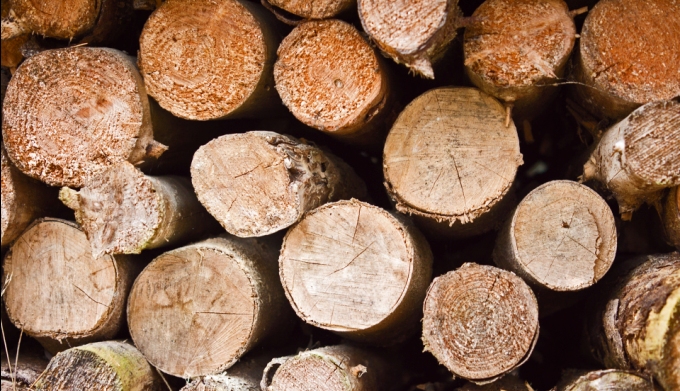Rice husk has proved to be a boon for villagers in parts of West Bengal. It is not only meeting their energy needs, but is also pumping up water for irrigation
Many residents of Birbhum district in West Bengal may not have electricity from the grid, but their homes are powered by energy tapped from rice husk, earlier considered an agricultural waste. With irrigation pumps that can now run on rice husk power, the newfound bio-energy also means more water for agriculture.
The largely tribal residents of many Birbhum villages are seeing this new dawn due to an initiative by Suri Natun Juger Pratyasha, an NGO that aims to generate renewable energy to make villagers self-reliant.
Sagar Sengupta, secretary of the organisation and one of the main proponents of the project, says, “Our aim is to provide energy which is environment friendly. Till now, these people would depend on monsoons for cultivating their land. Right from Jharkhand to Birbhum, the land is stony and irrigation is not all that easy. However, the rice husk project has enabled minor irrigation which will mitigate their needs.”
Most communities in rural areas use wood, coal and cow dung for cooking fuel. This combined with poor work practices at home and in small, agro-processing units lead to wastage of resources and pollution of air, soil and water.
According to a study by WHO, over a million people in India die every year because of indoor air pollution – the highest in the world. Women, cooking in unhygienic and polluted conditions, are particularly vulnerable. This is where the rice husk project tries to make a difference by providing cleaner cooking fuel. This has been made possible through an innovative gasifier technology.
“In the long run, our initiative will reduce the chopping down of trees, thus preventing deforestation and avoiding land degradation,” says Sengupta.
A major by-product of the rice-milling industry, rice husk is one of the most commonly available dry plant matter that can be converted into different types of fuels through a variety of thermochemical conversion processes. During milling of paddy, about 78% of the weight is rice, including broken rice and bran, while the rest is husk.
The husk and other waste biomass are compressed into firewood by a densification process known as briquetting. This increases the density of husk from 117.0 to 825.4 kg per cubic metre. This ensures easy handling, storing and transportability of the resource.
The power plant
 Fuel is ignited in the gasifier which is coupled with a flatbed dryer that contains seed grains. Combustible gases are produced from the gasifier within just 15-20 minutes. This provides the required temperature of 39 to 43 degrees Celsius for drying the seed grains in the flatbed dryer.Within 12 to 14 hours, the plant reaches a stage where 5 to 6 kg of rice husk is consumed per hour.
Fuel is ignited in the gasifier which is coupled with a flatbed dryer that contains seed grains. Combustible gases are produced from the gasifier within just 15-20 minutes. This provides the required temperature of 39 to 43 degrees Celsius for drying the seed grains in the flatbed dryer.Within 12 to 14 hours, the plant reaches a stage where 5 to 6 kg of rice husk is consumed per hour.
A 0.4‐metre diameter gasifier can provide the heat energy needed by a four-ton flatbed dryer. A 0.5‐metre diameter gasifier is suitable for a six‐ton dryer.The advantages of using the gasifier for the flatbed dryer are:
- Less ignition time to produce gaseous fuel, easy loading of rice husk and easy removal of char.
- No smoke during the operation.
- Easy to control and provides uniform temperature for drying.
- Low electrical consumption.
In addition to improving the economic conditions of farmers, the rice husk gasifier generates local employment.
Irrigation pumps powered by it are cheaper, longer lasting and more eco-friendly than diesel-powered pumps. In the rice husk-powered pumps, the gasifier is connected to a diesel generator and cuts diesel consumption by 70%. And it is much cheaper. With the gasifier, generating one unit of electricity costs around Rs 6, whereas it costs Rs 14.30 using diesel alone.
In the arid area of Birbhum, where 40% of the farmers own less than two acres, irrigation allows them to grow another crop in the summer. Farmers using this are starting to use greenhouse agriculture and micro-irrigation techniques too.
Rice husk firewood is also being used in distilleries, dyeing units, leather processing, garment industries, hotels, brick kilns, food processing units, pharmaceutical industries and wineries.
Sengupta believes this will be a major boost to the local economy. “The value added utility of rice husk results in increased demand for rice husk. This will also generate additional revenue for the small agro-processing units and rice cultivation.”
Most people, he adds, have begun switching to rice husk firewood mainly because it has high calorific value, costs less, there is lesser wastage and it is easy to handle. Moreover, since the project uses efficient and environment friendly technology, its successful implementation is likely to pave the way for similar industries to follow suit.

